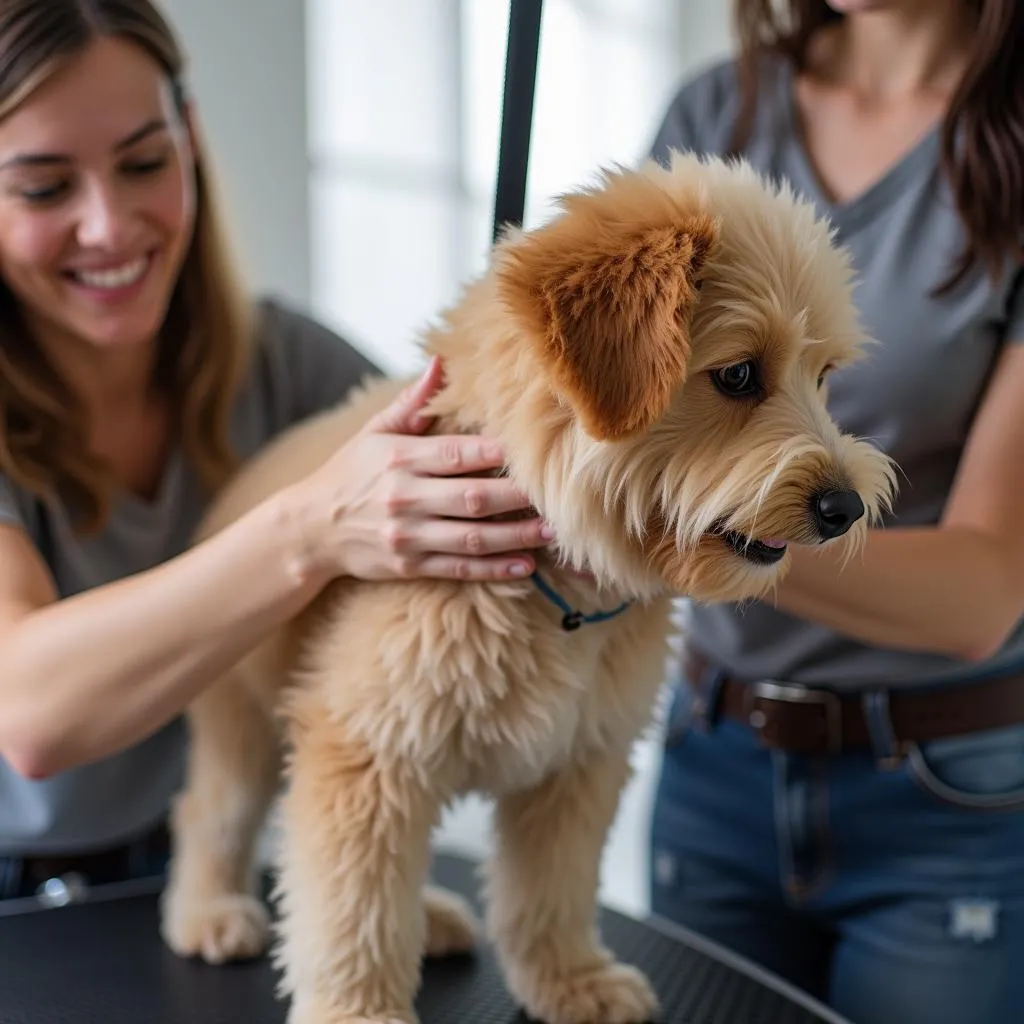“Nhất dáng, nhì da” – we all want our furry friends to look their best, and grooming is a key part of keeping them healthy and happy. But for some dogs, grooming can be a stressful experience. If your dog gets anxious or scared during grooming, it can be a challenge to get them through the process. But don’t worry, it’s a common issue and with a little patience and understanding, you can help your dog feel calmer and more comfortable during grooming sessions.
Why Do Dogs Get Anxious During Grooming?
Many factors can contribute to a dog’s anxiety during grooming, including:
- Past Negative Experiences: If your dog has had a bad experience with grooming in the past, they might be hesitant or fearful of it.
- Sensory Overload: The sounds, smells, and physical sensations associated with grooming can be overwhelming for some dogs.
- Lack of Positive Reinforcement: If your dog hasn’t been trained to associate grooming with positive experiences, they may be more likely to react negatively.
Tips to Calm Your Dog for Grooming
Here are some practical tips to help your dog feel calmer during grooming sessions:
Start Early and Slowly
Just like with humans, starting early and introducing grooming gradually can make a big difference. Begin by touching your dog all over their body with gentle strokes, using positive reinforcement like praise and treats. This helps them get used to being handled and touched.
Create a Relaxing Environment
A calm and comfortable environment can help reduce your dog’s anxiety.
- Find a quiet space: Avoid loud noises and distractions.
- Use calming tools: A calming pheromone spray or diffuser can help create a sense of peace.
- Use a comfortable surface: A stable grooming table or mat can help your dog feel secure.
Desensitization and Counter-Conditioning
These techniques can help your dog associate grooming with positive experiences:
- Gradual Exposure: Gradually introduce your dog to the sounds and sensations of grooming by using tools like brushes, nail clippers, or even just a hairdryer, but only for short periods at first.
- Positive Reinforcement: Reward your dog with treats and praise for calm behavior during grooming.
- Associate Grooming with Good Things: Offer your dog their favorite toy or game after grooming. This helps create a positive association with the experience.
Professional Help
If your dog is extremely anxious or you’re struggling to calm them on your own, don’t hesitate to seek professional help. A qualified groomer or dog trainer can provide personalized guidance and support.
Common Questions About Calming a Dog for Grooming
Here are some common questions and answers about calming a dog for grooming:
What if my dog has a history of bad grooming experiences?
 Dog grooming anxiety past experience: How to help your dog overcome fear
Dog grooming anxiety past experience: How to help your dog overcome fear
Patience and understanding are key. Take things slow and start by introducing grooming gradually. Reward any positive response with treats and praise. If your dog is fearful of a specific tool, like a brush, use positive reinforcement to associate the tool with positive experiences. For example, start by simply presenting the brush to your dog without touching them, and reward them for calm behavior. Gradually increase the duration and proximity of the brush to your dog.
What are some calming tools I can use?
You can find a variety of calming tools specifically designed for dogs. Some popular options include:
- Pheromone sprays and diffusers: These products release calming pheromones that can help reduce anxiety.
- Calming chews and treats: These often contain ingredients like chamomile or valerian root, which can have calming effects.
- Thundershirts: These tight-fitting vests provide a sense of security and comfort.
What if my dog is too stressed to even let me touch them?
If your dog is extremely stressed, it’s best to consult with a professional groomer or dog trainer. They can help you develop a plan to slowly desensitize your dog to grooming and teach them to associate it with positive experiences.
Conclusion
Grooming can be a positive and enjoyable experience for both you and your dog. With patience, understanding, and the right techniques, you can help your dog feel calmer and more comfortable during grooming sessions.
Remember, every dog is different. What works for one dog may not work for another. It’s important to observe your dog’s body language and adjust your approach as needed.
Do you have any other questions about grooming your dog? Let us know in the comments!
Leave a Reply
You must be logged in to post a comment.